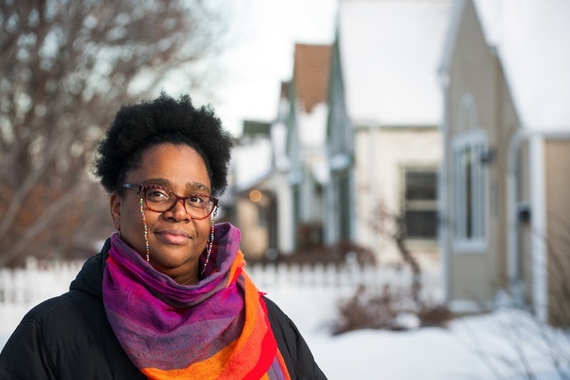Celebrating 50 Years of the Center for Writing
Every U of M student writes. Whether it be a discussion post, paper, lab report, presentation slide, or dissertation, each student must write in some capacity to complete their degree.
The Center for Writing recognizes the importance of this shared experience. It opens its (physical and virtual) doors to all students, providing support and building students’ confidence in their abilities through writing consultations across four modalities.
Since its opening 50 years ago, the Center has been an invaluable resource to students in the University community. Even so, its journey to this golden milestone has been anything but linear.
First There Were Four
Before 2003, the U was home to four separate student writing centers. The first—the General College Reading and Writing Skills Center—opened in 1972. By the 1980s, the term “skills” was dropped from its title. Kirsten Jamsen, director of the Center for Writing, says this change stemmed from “a recognition that writing is not just a skill that you master, that you don’t just learn to write or you learn to read and you're done.” It was renamed the General College Writing Center (GCWC).
The second center emerged around the same time when the English department began offering one-to-one writing guidance for undergraduates in the early 70s. By 1999, it was renamed the CLA Student Writing Center (SWC).
The third was created in 1987, but its target demographic was faculty and staff rather than students. The Center for Interdisciplinary Studies for Writing (CISW) served as a research and faculty development center within CLA, with a mission to increase writing across the University’s curriculum. The current writing intensive course requirement actually stemmed from CISW research.
The fourth—the Online Writing Center (OWC)—joined the mix in 1997. Within the Department of Rhetoric in the College of Agriculture (what is now called CFANS), the OWC was created with an aim to incorporate technology into writing education.
Jamsen says, “they all had the same mission, in that they were all seeking to support any writer who came through their doors, whatever writing project they were working on, whether they were an undergrad or grad student, or, in the case of CISW, whether they were an instructor teaching with writing.”
From Four to One
Turns out, having four centers was confusing for students. It was hard not to ask: why does the University need four?
Jamsen stepped in as director of the SWC in 2002. During the next year, CLA’s two writing centers—the SWC and the CISW—were combined to create the new Center for Writing, and Jamsen was named its first director. With this restructuring, the University’s four centers became three.
Around 2005, staff started to ask a familiar question: does the University really need three centers? Over the next few years, the OWC and the GCWC converged into the Center for Writing too. “It wasn't hard to merge us, because it wasn't like we were philosophically different,” Jamsen says.
At last, in 2008, the University had a single, centralized writing center that served all students.
Pedagogical Pillars
Jamsen says the Center for Writing’s underlying mission “is to meet you where you are and to help you develop as a reader, writer, and thinker to be successful.” This goal is supported by the Center’s one-to-one pedagogy for Student Writing Support (SWS). She says, “it is not one-on-one like ‘I know more than you and I'm above you,’ but one-to-one like we're sitting side by side, we're both bringing our brains to the table, and hopefully we're figuring things out together.”
Consultations between students and writing consultants—many of whom are undergraduate or graduate students themselves—are meant to be supportive and collaborative above all. Learning is a two-way street at the Center. Zoe Plait, an undergraduate student who started as a consultant in fall 2022, says, “practicing consultancy has especially helped me structure my thoughts when I’m writing.”
The Center does not grade or employ evaluative language; rather, it is a space for brainstorming and articulating ideas, for reviewing works in progress, and for affirming the abilities each writer has to offer. “I don't want to say we’re tutors. That's not right. We're like a support system that provides a kind of teaching that [students] can't really get anywhere else,” notes Anne Fretheim, a professional writing consultant at the Center.
Prior to the COVID pandemic, the Center offered this instruction through three modalities: in-person by appointment in Nicholson Hall, in-person walk-in in Appleby Hall, and SWS.online. In-person consultations allow students to meet with a writing consultant face-to-face. SWS.online involves a hybrid model: a student shares their writing with a consultant online, the consultant reviews and makes suggestions on the document for 40 minutes, the student then reviews those suggestions for 40 minutes, and finally the two connect in an online chat to discuss for 40 minutes.
Finding Potential in Pandemic Times
When COVID-19 emerged, the Center had to shift entirely to SWS.online and Zoom consultations. Though everyone is familiar with Zoom now, the initial switch proved to be a big change for Jamsen and her staff of 40 consultants. Fretheim says, “I used to be one of those people who only wanted to work with hard copies. I did not want to look at a student's paper online…the pandemic has changed that. Now I really enjoy collaborating with students online.”
Mere days after students were sent home, the Center was back up and running completely online. With the new Zoom modality, students were able to work face-to-face with a writing consultant from the comfort of their own beds. As it turns out, students seem to enjoy Zoom consultations beyond pandemic times—nearly half of all SWS consultations during the 2021–2022 school year were held over Zoom.
As of fall 2022, all four SWS modalities are back in business. Still, about half of the Center’s 7,000 annual consultations take place on Zoom or SWS.online. Plait says working in these modalities “calls for a different style of consulting, which we spent a lot of time talking about in the Writing Consultancy class our director taught last semester.” Jamsen and her team are curious to see how these engagement numbers shift in the future.
Myth Busting
Jamsen wants students to know that you don’t need a completed draft—or any writing—to have a worthwhile consultation. “Just come! Come in whatever form,” she says. “You don’t even need to know what kind of help you need. We’ll help you figure that out.” Writing consultants are able to support students at any point in the writing process and can connect them to resources across campus.
She also wants to counter the idea that students won’t get in unless they book appointments days or weeks in advance. Turns out, thanks to the Center’s four modalities, there is ample opportunity for same-day consultations.
On the Horizon
After 21 years as director, Jamsen is retiring at the end of this school year. “I can’t wait to see what the Center for Writing becomes,” she says. “We have to keep thinking about how to be as accessible and as inclusive as we can be, and then learn from the people who come through our doors.” To her, a healthy writing center is one that is “evolving and adapting” to best meet the needs of every student.
The Center for Writing knows a thing or two about being adaptable. Because of students’ unexpected affinity for online writing help, its website is getting revamped this year. They hope to create a more accessible interface for students to schedule appointments and reach out to staff.
Through all of its “evolving and adapting” in the past 50 years, the Center for Writing’s mission has remained the same. No one knows what kind of world the Class of 2073 will be writing about, but it is clear that the Center for Writing will continue to be a mainstay of the University for the next 50 years and beyond.
Celebrating 50 Years of the Center for Writing
Help us celebrate our 50th anniversary and honor Kirsten with a gift to support the next 50 years of the Center for Writing
This story was written by an undergraduate student in CLA.



